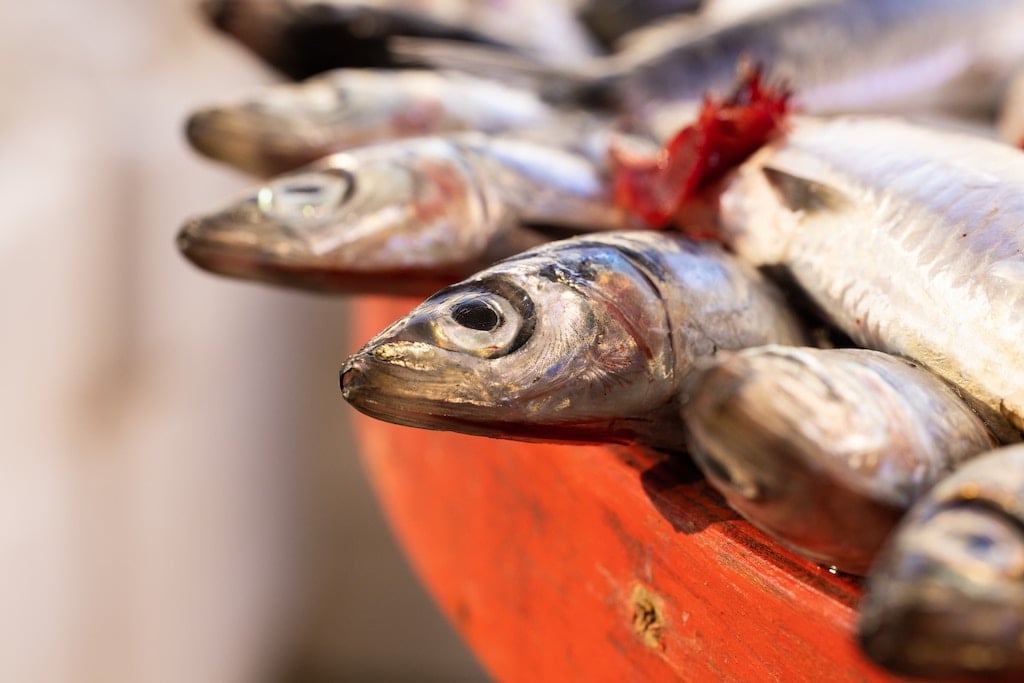The ancient Roman foods Italians still eat

The heritage of Ancient Rome is everywhere in Italy, but it’s not just the amazing archaeology. Foreigners (and often even Italians) are amazed to find out that we still eat some of the exact recipes of our ancestors.
One is lasagne and pasta. Originally, both were called laganae.
“Historical sources say it was a flat pasta sheet sliced into irregular strips which were cooked to make soups of leek and chickpeas, a very popular Roman dish”, says Giorgio Franchetti, an Ancient Rome food historian and archaeologist.
The ‘laganae’ is the embryo of what would later become modern-day lasagne, stratified pasta sheets filled with meat and tomato sauce. The Roman strips of pasta were similar to a very particular type still served today in Italy called ‘maltagliati’, meaning ‘badly cut’ in Italian, because of the pasta’s irregular shapes resembling flat rhombus.
“The poet Horace writes how he can’t wait to get back home to delight in a bowl of leeks, chickpeas and laganae, while Cicero himself was an addict of laganae, he’d devour such huge quantities it gave him bowel disorders,” says Franchetti.
READ ALSO: Four myths about ‘traditional’ Italian food you can stop believing
Foreigners touring the Amalfi Coast and stopping in the charming fishermen village of Cetara buy the iconic, expensive Colatura di alici, an intense, salty-flavoured anchovy sauce that derives from an ancient Roman condiment.
The colatura, a niche product, is brewed with high-quality fresh anchovies which are processed according to tradition and seasoned in wooden barrels for at least six months. It’s ideal for spicing-up pasta, vegetables, fish and other dishes of Mediterranean cuisine.

A fermented fish sauce made with anchovies was a popular Roman condiment. Photo by engin akyurt on Unsplash
The colatura’s direct ancestor is Ancient Rome’s garum which was made with layers of salt and fish (mainly tuna, salmon, anchovies, sardines, blood and interiors) left to soak and ferment in stone or wooden containers under a scorching sun.
“Garum was hailed by the great Roman gourmet Marcus Gavius Apicius and authors such as Pliny who called it ‘liquor exquisitus’ (delicious liqueur). The trade flourished across the empire, with distribution sites scattered even on the most tiniest islands and outposts”, says Franchetti.
In Ancient Rome the flavoursome dip was the second most expensive liquid on the market after perfumes and despite its often foul smell due to excessive heating or rotting, Roman chefs used it for lavish meals.
READ ALSO: OPINION: Why claims Italian cuisine is a 'modern invention' have angered Italy
Garum was either tasted straight in its purest form or with species and aromatic herbs such as fennel and mint. It was often added to wine, olive oil and vinegar and the other by-products of its fermentation were also used (including the paste-like gluey substance at the bottom of the amphora).
It was extensively used in Roman households a bit like extra virgin olive oil is today in Italy. Tasty anchovy omelette, a specialty served in most Italian regions, is another indirect descendant of garum.
A few Italian and non-Italian cakes have surprisingly ancient roots as well. All sheep and goat milk ricotta cakes come from Roman placenta, largely documented in Ancient Roman cookbooks. It was a flat pie of solidified ricotta made with honey, which was cut into slices just like ‘la torta della nonna’ made today in Italian households and served in restaurants in central Italy with the addition of pine nuts and chocolate drops.

The ancient Romans often indulged in ricotta 'cheesecakes' for dessert. Photo by Mayumi Maciel on Unsplash
“There’s also another world-famous dessert which is mistakenly believed to be American but was invented in the Eternal City: cheesecake”, says Franchetti. The original name was Savillum and it was made with fresh goat cheese, topped with honey and poppy flower seeds. The recipe dates back to the third century BC and was written by army general Cato the Elder, who also happened to have a sweet tooth.
“Other ancient Roman foods we still eat are apple sauce with wine (mela cotta al vino), fried sugary cheese balls (called ‘globi’) and various cold cuts”, says Franchetti.
READ ALSO: Why do Italians get so angry if you mess with classic recipes?
Two of the most famous ones with Roman origins are luganega (rustic pork sausage made in the ancient Roman region of Lucania, today known as Basilicata) and Bologna’s iconic mortadella, the ground-meat cured pork sausage with white cubes of pork fat loved worldwide, which has been a treat in Italy since millennia.
The original ancient Roman name for mortadella was myrtatum, and it has always been made in Bologna where old stone epigraphs hailing the succulent sausage have been found, says Franchetti.
The original recipe was slightly different though.
Pliny the Elder writes that the name ‘myrtatum’ comes from using myrtle grains instead of the black pepper grains of today to enhance the cured meat flavour with spices.
“There are just so many foods still around that hail back ages, first made by our Roman ancestors, to which most Italians are totally oblivious. Just think about lasagne”, says Franchetti.
Comments
See Also
One is lasagne and pasta. Originally, both were called laganae.
“Historical sources say it was a flat pasta sheet sliced into irregular strips which were cooked to make soups of leek and chickpeas, a very popular Roman dish”, says Giorgio Franchetti, an Ancient Rome food historian and archaeologist.
The ‘laganae’ is the embryo of what would later become modern-day lasagne, stratified pasta sheets filled with meat and tomato sauce. The Roman strips of pasta were similar to a very particular type still served today in Italy called ‘maltagliati’, meaning ‘badly cut’ in Italian, because of the pasta’s irregular shapes resembling flat rhombus.
“The poet Horace writes how he can’t wait to get back home to delight in a bowl of leeks, chickpeas and laganae, while Cicero himself was an addict of laganae, he’d devour such huge quantities it gave him bowel disorders,” says Franchetti.
READ ALSO: Four myths about ‘traditional’ Italian food you can stop believing
Foreigners touring the Amalfi Coast and stopping in the charming fishermen village of Cetara buy the iconic, expensive Colatura di alici, an intense, salty-flavoured anchovy sauce that derives from an ancient Roman condiment.
The colatura, a niche product, is brewed with high-quality fresh anchovies which are processed according to tradition and seasoned in wooden barrels for at least six months. It’s ideal for spicing-up pasta, vegetables, fish and other dishes of Mediterranean cuisine.

The colatura’s direct ancestor is Ancient Rome’s garum which was made with layers of salt and fish (mainly tuna, salmon, anchovies, sardines, blood and interiors) left to soak and ferment in stone or wooden containers under a scorching sun.
“Garum was hailed by the great Roman gourmet Marcus Gavius Apicius and authors such as Pliny who called it ‘liquor exquisitus’ (delicious liqueur). The trade flourished across the empire, with distribution sites scattered even on the most tiniest islands and outposts”, says Franchetti.
In Ancient Rome the flavoursome dip was the second most expensive liquid on the market after perfumes and despite its often foul smell due to excessive heating or rotting, Roman chefs used it for lavish meals.
READ ALSO: OPINION: Why claims Italian cuisine is a 'modern invention' have angered Italy
Garum was either tasted straight in its purest form or with species and aromatic herbs such as fennel and mint. It was often added to wine, olive oil and vinegar and the other by-products of its fermentation were also used (including the paste-like gluey substance at the bottom of the amphora).
It was extensively used in Roman households a bit like extra virgin olive oil is today in Italy. Tasty anchovy omelette, a specialty served in most Italian regions, is another indirect descendant of garum.
A few Italian and non-Italian cakes have surprisingly ancient roots as well. All sheep and goat milk ricotta cakes come from Roman placenta, largely documented in Ancient Roman cookbooks. It was a flat pie of solidified ricotta made with honey, which was cut into slices just like ‘la torta della nonna’ made today in Italian households and served in restaurants in central Italy with the addition of pine nuts and chocolate drops.

“There’s also another world-famous dessert which is mistakenly believed to be American but was invented in the Eternal City: cheesecake”, says Franchetti. The original name was Savillum and it was made with fresh goat cheese, topped with honey and poppy flower seeds. The recipe dates back to the third century BC and was written by army general Cato the Elder, who also happened to have a sweet tooth.
“Other ancient Roman foods we still eat are apple sauce with wine (mela cotta al vino), fried sugary cheese balls (called ‘globi’) and various cold cuts”, says Franchetti.
READ ALSO: Why do Italians get so angry if you mess with classic recipes?
Two of the most famous ones with Roman origins are luganega (rustic pork sausage made in the ancient Roman region of Lucania, today known as Basilicata) and Bologna’s iconic mortadella, the ground-meat cured pork sausage with white cubes of pork fat loved worldwide, which has been a treat in Italy since millennia.
The original ancient Roman name for mortadella was myrtatum, and it has always been made in Bologna where old stone epigraphs hailing the succulent sausage have been found, says Franchetti.
The original recipe was slightly different though.
Pliny the Elder writes that the name ‘myrtatum’ comes from using myrtle grains instead of the black pepper grains of today to enhance the cured meat flavour with spices.
“There are just so many foods still around that hail back ages, first made by our Roman ancestors, to which most Italians are totally oblivious. Just think about lasagne”, says Franchetti.
Join the conversation in our comments section below. Share your own views and experience and if you have a question or suggestion for our journalists then email us at [email protected].
Please keep comments civil, constructive and on topic – and make sure to read our terms of use before getting involved.
Please log in here to leave a comment.